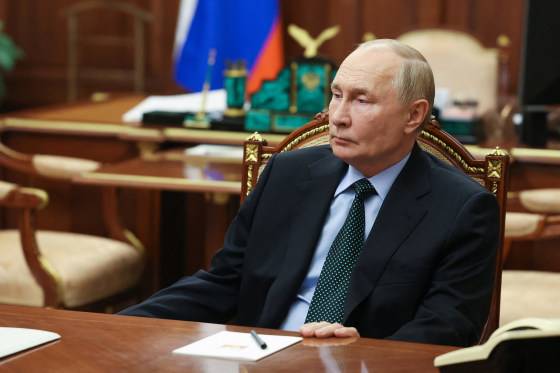
Days after the United States let Ukraine to launch an attack inside Russia using American missiles, Russian President Vladimir Putin publicly lowered the threshold for his nation’s use of nuclear weapons on Tuesday.
Moscow could launch a nuclear strike if attacked by a non-nuclear nation backed by a nuclear state, according to the Kremlin, which said Putin had approved an updated nuclear doctrine, a document that regulates how Russia utilizes its nuclear weapons.
Later on Tuesday, Moscow’s defense ministry asserted that Ukraine had launched its first attack on Russian territory with long-range weaponry provided by the United States, using an ATACMS missile to strike a military installation in the Bryansk region.
Five ATACMS missiles were shot down by Russian air defenses, but pieces of another landed onto the technical area of a military installation in the Bryansk area, starting a fire that was swiftly put out. According to a statement from the military ministry, there were no injuries or damages.
“According to confirmed data, the deployed ATACMS operational-tactical missiles were American-made,” added the statement.
The Ukrainian military had earlier claimed to have struck a military facility in Bryansk, close to the city of Karachev. What weapons were utilized in the attack was not specified.
The Kremlin has continuously threatened a nuclear war in the 1,000 days since its full-scale invasion of Ukraine, and the amendments to Russia’s nuclear doctrine represent the most saber rattling to date.
In remarks released early Tuesday, Kremlin spokesperson Dmitry Peskov told the TASS state news agency that the nuclear doctrine amendment was necessary to update the document to reflect the present political climate.
In light of Washington’s policy change, Peskov described Moscow’s new threat: that a nuclear reaction may result from Ukraine’s military using Western non-nuclear missiles against Russia in accordance with the new doctrine.
However, he emphasized, using nuclear weapons would only be a last choice.
In an attempt to caution the West against easing constraints on Kyiv’s use of long-range weapons to strike deep within Russia, Putin had hinted at the change to his nation’s stance earlier this year.
He added that Russia had the right to use the weapons even in the event of an attack on Belarus. And that change is reflected in the new doctrine.
“Aggression against the Russian Federation and its allies by a non-nuclear country with the support of a nuclear state will be considered a joint attack,” it states.
In addition, the policy states that the Russian Federation may use nuclear weapons if there is a serious threat to Belarus’s and its own sovereignty and territorial integrity. This is different from earlier language that stated the state may use nuclear weapons if its very existence is in jeopardy.
The modifications come after Putin warned the United States and its NATO allies that if they used the long-range weaponry they provided to the Ukrainians against Russian territory, NATO and Russia would be at war.
Kyiv has long urged the Biden administration to loosen restrictions on the weapons it has sent to its friend, but the administration has resisted.
However, U.S. officials told NBC News that the Biden administration had approved the use of the long-range ATACMS missile systems for limited strikes inside Russia after the U.S. and others claimed that hundreds of North Korean troops had entered the battle alongside the Kremlin’s military.
The Kremlin denounced the change, with Peskov claiming on Monday that Washington was fomenting “oil on the fire” and encouraging “further escalation of tension around this conflict.”
The changes create more leeway for a Russian nuclear response to Ukrainian or, as the Kremlin frames it, Western strikes on Russian territory said Tatiana Stanovaya, a nonresident scholar at the Carnegie Endowment for International Peace and the founder and head of the political analysis firm R.Politik.
She suggested that the timing of the revised nuclear doctrine may have been influenced by the shift in Washington’s leadership.
Putin may see the current situation as a strategic in-between moment anticipating possible peace initiatives from (President-elect Donald) Trump while emphasizing what he views as the irresponsibility of Biden s policy. Putin may seek to present the West with two stark choices: Do you want a nuclear war? You will have it, or Let s end this war on Russia s terms, Stanovayasaid in a post on X.
This marks an extraordinarily dangerous juncture, she added.
Note: Thank you for visiting our website! We strive to keep you informed with the latest updates based on expected timelines, although please note that we are not affiliated with any official bodies. Our team is committed to ensuring accuracy and transparency in our reporting, verifying all information before publication. We aim to bring you reliable news, and if you have any questions or concerns about our content, feel free to reach out to us via email. We appreciate your trust and support!
